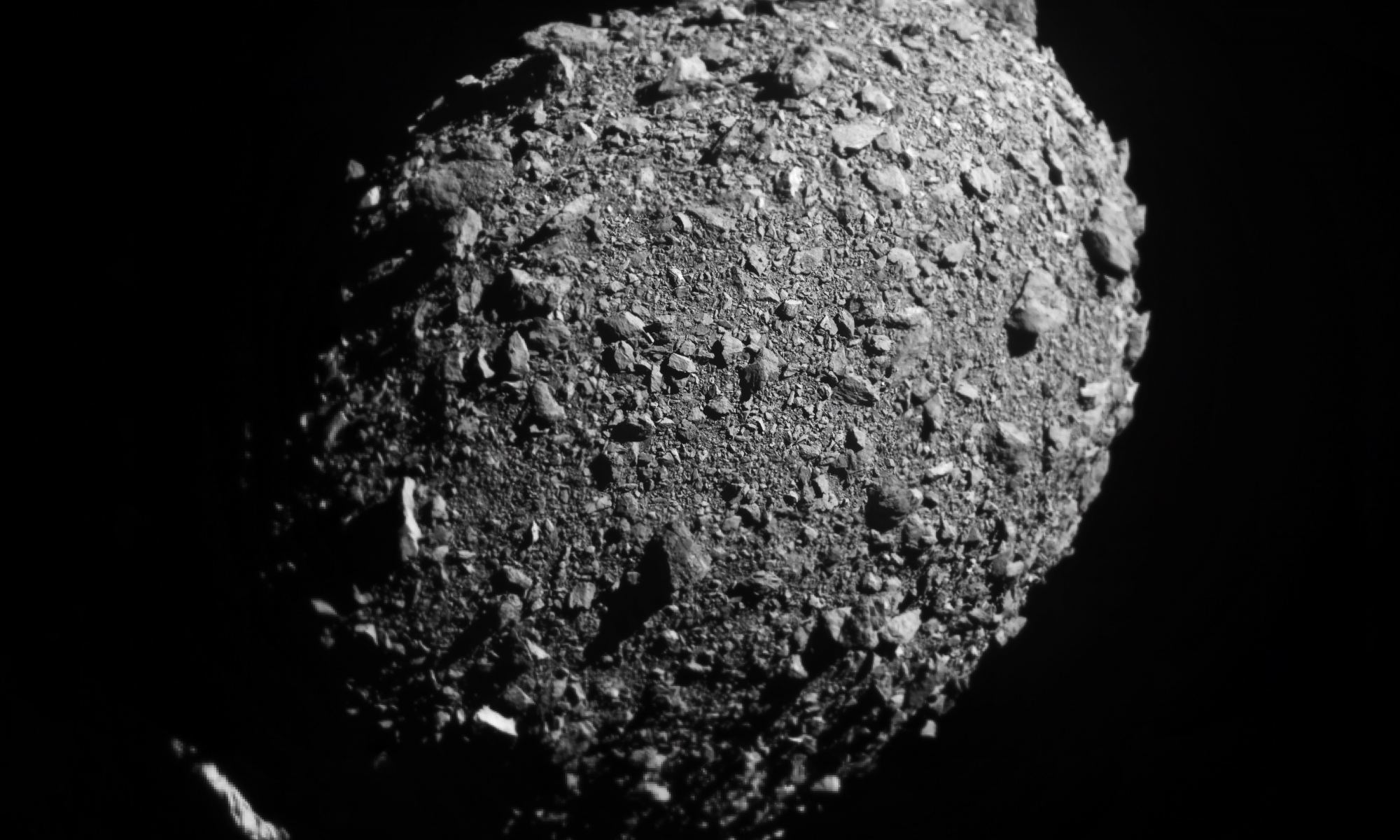Here’s a sharper view of Dimorphos, the small asteroid moonlet that the DART (Double Asteroid Redirection Test) spacecraft intentionally crashed into. Eydeet on Imgur created a higher resolution image of Dimorphos by stacking the last few images received from the spacecraft before impact.
First impressions? It’s an egg-shaped rubble pile.
What we know:
Dimorphos is about 160 meters (530 feet) in diameter and it orbits a larger, 2,560-foot (780-meter) asteroid called Didymos. This asteroid duo makes the perfect target for this demonstration test, as NASA says the impact should change the way Dimorphos orbits Didymos. DART crashed into the asteroid at roughly 22,530 km/hr (14,000 mph), which is expected to have slightly slowed the asteroid’s orbital speed. One NASA scientist explained, the impact was “like ramming a golf cart into the Great Pyramid.”
Scientists are now poring over the data to determine how much the orbit was changed. This will show if DART’s 570 kilograms (1,260-pounds) of impact is a viable mitigation technique for protecting the planet from an Earth-bound asteroid or comet, if one were discovered.
The orbit of Didymos and Dimorphos ranges from just outside the orbit of Earth (about 1 AU) to a bit beyond the orbit of Mars (about 2.27 AU. It takes 2.11 years for the pair to make a trip around the Sun.
The following tweets provide some info about the scale of what we see up close on Dimorphos:
Didymos is classified as a member of the Amor group of asteroids, which are near-Earth asteroids with orbits outside the orbit of Earth and inside of Mars’ orbit.
Didymos spins rapidly – rotating about once every 2.26 hours. The moonlet revolves around the larger body about once every 11.9 hours. The main asteroid and its moonlet orbit each other about 1 kilometer (0.62 miles) apart.
DART launched on November 24, 2021, and after 10 months of flying about 11 million kilometers (7 million miles) through space, it caught up with Dimorphos.
The DART team has said they expect the impact to shorten Dimorphos’ orbit by about 1 per cent, or roughly 10 minutes; precisely measuring how much the asteroid was deflected is one of the primary purposes of the full-scale test. Some of the early indications from images taken by both ground-based and space telescopes are that the impact appeared to be larger than expected. More details from the telescopes will be coming out in the coming weeks and months, so it may be some time before we know precisely how much DART’s impact altered Dimorphos’ the asteroid’s orbit around Didymos.
Further reading:
More info on Didymos and Dimorphos from NASA
NASA’s Planetary Defense Coordination Office

